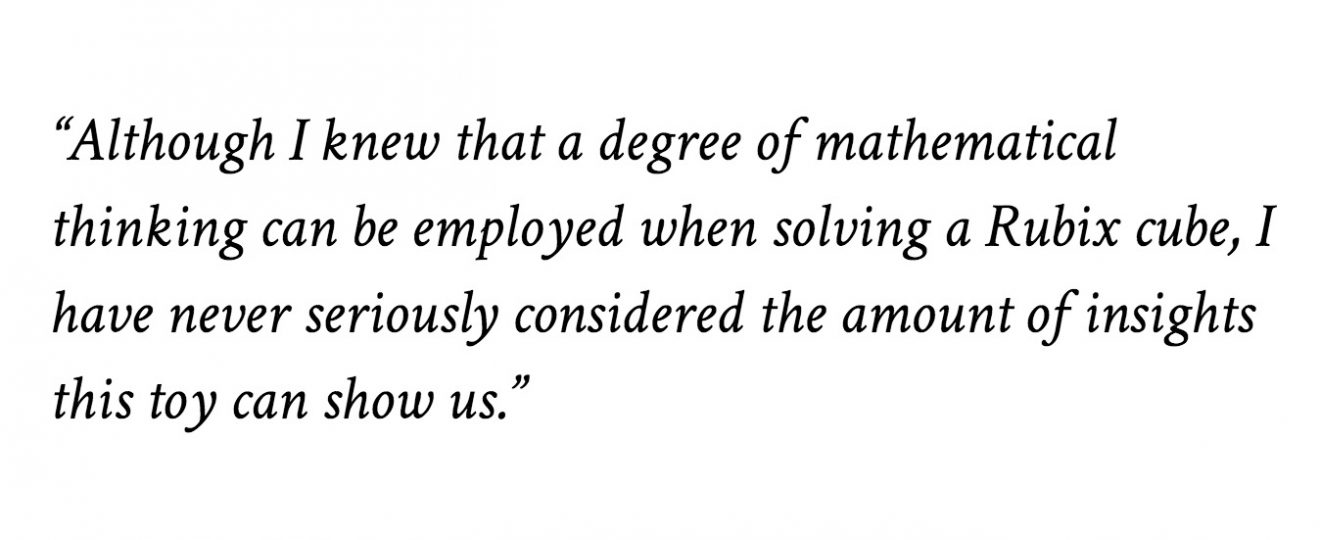How seemingly simple entertainment can become a reassurance of order in the world around us.
For nearly three generations, the Rubix cube has entertained eager-minded individuals of all ages with the challenge of twisting tauntingly simple colored cubes into order. I myself have spent many times trying to beat my ‘personal time’, or to pick a color and solve that side fastest. In fact, friends of mine can even solve this plastic cube one-handed or blindfolded.
I’ve seen these toys sitting in flats, classrooms, and shops. They appear in films and TV shows, captivating characters, and indicating an above-average intelligence- but to me, it has never represented more than an entertaining pastime.
Although I knew that a degree of mathematical thinking can be employed when solving a Rubix cube, I have never seriously considered the amount of insights this toy can show us.
More recently, I began to follow a math tutor whose videos I used for a calculus class. This account is run by an online math tutor Grant Sanderson. On Twitter, his content includes his own gifs of colorful geometric patterns and “approachable proofs for those without much background.” Whilst Sanderson acknowledges that these visuals on a “rapid-fire medium like Twitter get people excited about math, [he] certainly doesn’t think much learning arises from it.” But while serious learning generally does not arise, gifs and other online content have become the modern version of a Rubix cube– a captivating and accessible form of entertainment at the surface level.
But more importantly, these instant forms of amusement can be a means of helping people become excited about the mathematical principles below the surface of visually captivating gifs and the Rubix cube. And while excitement about mathematical principles may sound oxymoronic, it is valuable. As Sanderson explains, “the real reason to care about math is that it solves problems for us, and it reveals the order in chaotic patterns we see in the world around us.”
For those of us who still struggle to visualize how this works- just imagine the Rubix cube again. If you blindly manipulate the cube, it is nearly impossible to solve. There are 43 quintillion permutations of a singular cube. Absolute chaos, when trying to imagine that many different patterns on the cube, much less conceptualize 43 quintillion of anything. But academics and amateurs alike have studied this puzzle, even publishing articles such as one by MIT entitled “Group Theory and Permutation Puzzles,” all in efforts to decode this toy in fast, more efficient manners. The idea that large institutions have dedicated time and resources to solving what appears to be a simple game is telling- that the solutions to the Rubix cube are valuable, in a broader means, to making sense of the complicated.
The Rubix cube shares with mathematical gifs many commonalities, most importantly the accessibility to a larger audience. And so too comes the reassurance that the confusing and chaotic can be simplified into patterns and order.




